Health and Wellbeing
It's vital in these challenging times that, as well as looking after our children's educational development, we also look after their health and wellbeing and social development (even if remotely).
Dinosaur Strides – Mairead McElroy
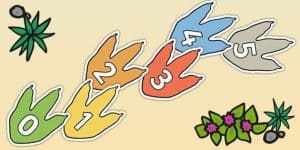 This is a fun physical activity to get children’s bodies moving and energized to break up a busy day of home schooling!
This is a fun physical activity to get children’s bodies moving and energized to break up a busy day of home schooling!
Learning Intention:
- Develop listening and attention skills.
- Develop confidence, imagination through a range of movement activities.
Resources:
- Dinosaur number footprints (print out available or draw them with children).
Activity
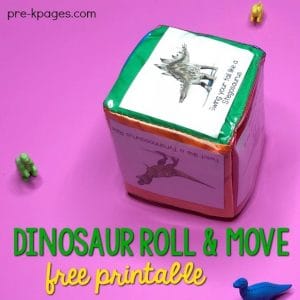 Ensure there is a large enough floor space for movement.
Ensure there is a large enough floor space for movement.- Scatter dinosaur number footprints 1-10 around the floor and designate the child to a number that is their magic spot they know to return to.
- As a warm-up to the activity play the song We are the Dinosaurs and encourage the children to march and stomp like dinosaurs, touching as many dinosaur footprints as they can along the way. Encourage children to bend their knees as they touch a footprint and keep their heads up at all times.
- Encourage children to march in different directions around the dinosaur footprints to the song like forwards, backwards, turn (create obstacles for them to experiment moving over, past and under). When the music stops ask the child to return to their magic spot.
- Next create some cards or download online with the following sentences:
Twist like a Tyrannosaurus Rex, Stretch your neck like a Brachiosaurus, Flap your arms like a Pteranodon, Swing your tail like a stegosaurus, Run like a Velociraptor, Tiptoe like a Triceratops.
- This can be created like a dice for the child to roll or randomly select them.
- Cool down from the activity by encouraging the child to return to their magic spot and curl up small in a ball and then jump up tall stretching out our hands, arms and legs.
Progression/Follow up Activity:
- Introduce numeracy to the game by calling out the number you would like the child to land on.
- Offer challenge by asking can you find the number in between the one you are standing on and another number.
Obstacle Course – Louise Orr
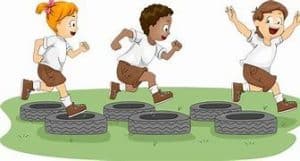 Learning Intention
Learning Intention
Develop your child’s physical skills and confidence through participating in various movements. Promoting motivation and helping your child create their own obstacle course.
Activity
1. Gather equipment you can use from around your house, make use of open ended materials you don’t need expensive purpose made equipment.
2 Encourage your child to create their own obstacle course in the garden you may use items such as a ball, plant pots, sticks, a plank of wood or even chalk to draw lines on the ground.
3. Support your child by imitating how they use the equipment or modelling how they could use the equipment. This will help motivate your child to become actively engaged in physical activity.
4. Incorporate jumping, throwing, balancing, hopping and running all into one fun activity.
Dance Party! – Eirinn McCrudden
Like musical statues, you have to listen for the music to stop before striking your best dance pose! Once you’ve got a hang of the game, it’ll be made harder by giving specific instructions to follow when the music stops.
Learning Intention:
Experiment with different ways of moving, becoming aware of general space around them and listening to and following simple instructions.
Activity:
WARM-UP: This is a crucial step to make sure our bodies are awake and know that we’re going to start some exercise. These short exercises will only last 30 seconds on and 30 seconds rest until the next one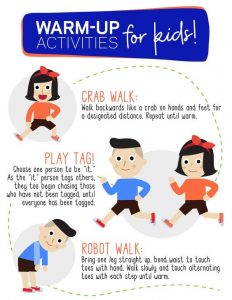 and will last a total of 5 minutes. These help to get our blood pumping and our hearts beating. Exercising you could do are:
and will last a total of 5 minutes. These help to get our blood pumping and our hearts beating. Exercising you could do are:
- Star jumps
- High knees
- Running on the spot
- Hopping on one foot
- Lunges
- Side steps
DANCE PARTY: Similar to the game musical statues, put some music on and dance around! When the music stops, strike your best dance pose. Once your child is familiar and understands the game you can now try giving them some instructions to follow for when the music stops. For example:
- Walk like a robot
- Balance like a flamingo
- Jump like a frog
- Flap your arms like a parrot
- Roll up tight like a ball
- Stretch up straight like a tree
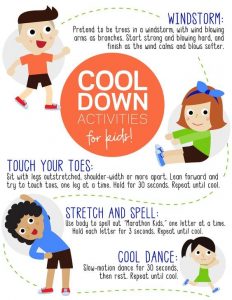 COOL DOWN: This step is very important to make sure your muscles are relaxing, and your heartbeat is slowing back down to normal. Similar to the warm–up, these exercises should only last about 5 minutes. Try doing some slow movements and stretches such as:
COOL DOWN: This step is very important to make sure your muscles are relaxing, and your heartbeat is slowing back down to normal. Similar to the warm–up, these exercises should only last about 5 minutes. Try doing some slow movements and stretches such as:
- Stretch your arms above your head nice and tall
- Touch your toes
- Cross right arm across front of body and hold with left (repeat for left arm too!)
Extension:
For added exercises or to extend your PE time, the NHS Change 4 Life website has lots of Disney/ Pixar themes exercise activities you can do free of charge! Access at:
https://www.nhs.uk/10-minute-shake-up/shake-ups
SPOT ON – Lindelle McCrory
An ideal opportunity for children to have outdoor fun promoting children’s healthy development. Activity can be played with one or two people.
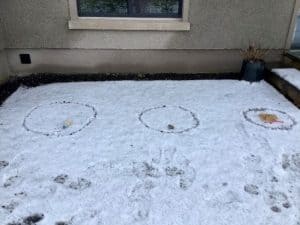 Learning Intention
Learning Intention
Develop underarm throw, promoting hand-eye coordination.
Activity
1. Resources: Empty bottle, rice, stone, pasta, zipper bag and a stick.
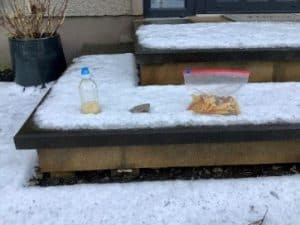 2. Firstly, the adult/child can create three different size circles with a stick or use three different size boxes.
2. Firstly, the adult/child can create three different size circles with a stick or use three different size boxes.
3. Next, the adult/child can fill an empty bottle with rice, fill a zipper bag with some pasta and get a pebble/stone.
4. Mark a line to stand behind approximately 2 metres from the circles, depending on the child’s ability.
5. Take a turn to throw the object of choice into the circle/box. To make it more fun and competive, 1 point can be awarded if you get it into the big circle, 2 points for the middle size circle and 3 points for the small circle.
6. You win when you get an object on each of the three circles or when you reach a score of 10.
Emotion Potion – Lauren Presho
This Personal Development and Mutual Understanding (PDMU) activity allows young children to begin to identify different emotions while enjoying some messy play.
Learning Intentions:
To discuss and identify different emotions and consider capacity and measure while making ’emotion potions’.
Activity
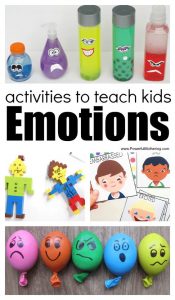 1. Resources: 5 empty plastic bottles or similar containers, measuring jug, funnel, different food colouring or paints, water, paper, colouring pens/pencils, glue/cello tape. Optional – vegetable oil and/or glitter.
1. Resources: 5 empty plastic bottles or similar containers, measuring jug, funnel, different food colouring or paints, water, paper, colouring pens/pencils, glue/cello tape. Optional – vegetable oil and/or glitter.
2. If possible, watching the Disney film ‘Inside out’ is a good stimulus for this activity.
3. Talk with your child about different emotions (suggestions: happy, sad, angry, scared, excited). Encourage the child to talk about times when they have felt a particular emotion and share your experiences with your child.
4. Cut out small faces (circles) of paper and invite your child to draw different faces depicting the emotions – no more than 5! And stick these faces onto the bottles.
5. Using the measuring jug and the funnel ask the child to pour different amounts of water into the bottles to represent how often they feel the emotions. For example I feel happy a lot but I only feel sad a little bit.
6. Ask the child to assign different colours to the emotions and explain why (suggestions: Happy = yellow, sad = blue, angry = red, scared = purple, excitement = green). You can provide suggestions, however, go with whatever colour the child chooses. The child can then turn the water whatever colour they chose by adding paint or food colouring to the bottle and shaking it. Remember to put the lid back on!
7. Optional: To turn the emotion potions into even more attractive sensory bottles, a small amount of vegetable oil and/or glitter can be added.
8. If possible: It would be beneficial for the child to explain to another family member what the emotion potions are.
9. Activity sourced from Pinterest.
Carnival Games – Nicola Andrews
Enjoy the experience of creating and attending your own carnival.
Learning Intentions
To develop hand-eye coordination and practise underarm throwing.
Activity
1. Tin Can Stack; stack tin cans and throw a soft ball or bean bag to try to knock them over. Re-stack for next person.
2. Target Practice; using buckets or bowls of different sizes and at different distances from the child, throw a ball or bean bag into the buckets/bowls.
3. Hoopla: use over-turned buckets or plastic bottles filled with water and try to throw a hoop over the target.The children could even use their teddy bears to hoopla.
4. Bowling: Try to bowl down all the tin cans or plastic bottles using a football.
5. If you don’t have bean bags, fill old socks with rice or just use a pair of rolled up socks.
Time Capsule! – Oonagh McLaughlin
Learning Intentions
To create a personal narrative.
Activity
1. Your children could use this time at home to create a personal time capsule of their experiences.
- write or draw about their activities at home
- include letters from their school
- cut out newspaper articles or headlines
- write about moments such as the applause for the NHS
- document what they see when they go for walks, such as rainbows in neighbours’ windws
2. This could also be done digitally and they could create a digital diary entry each day by photographing /videoing their memories. They can share this with their teachers when they return to school.
